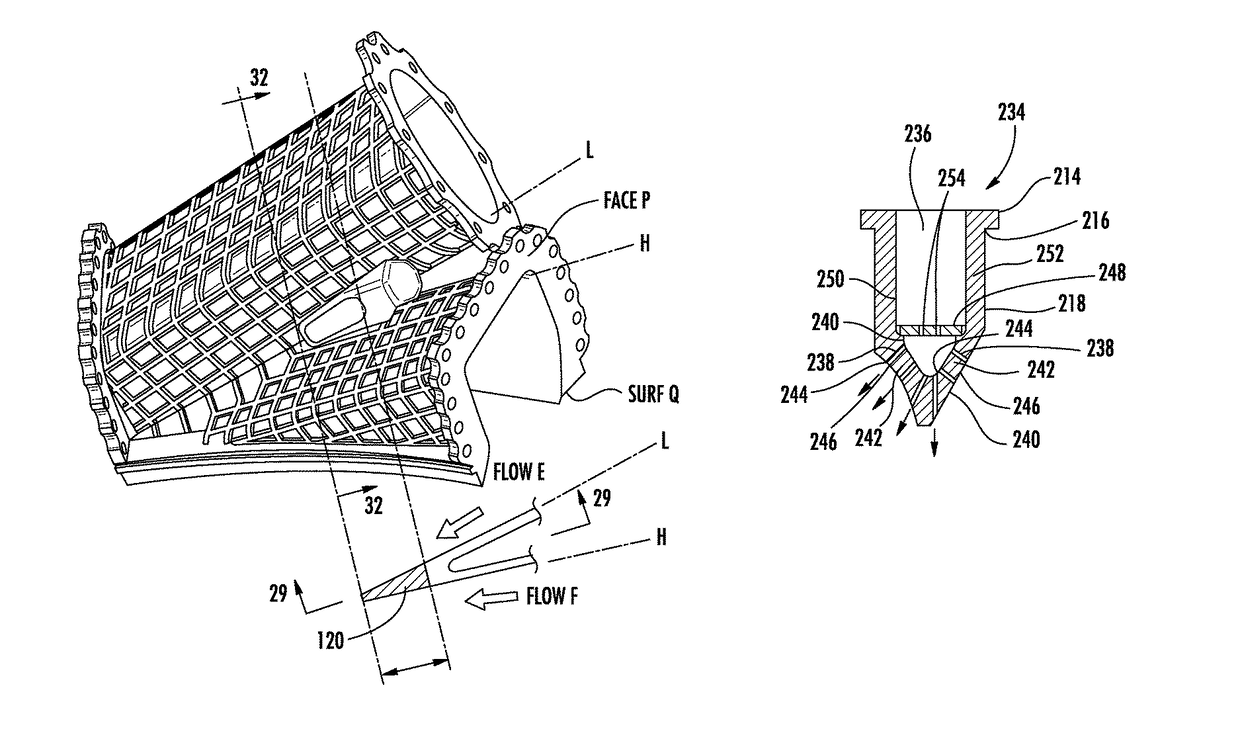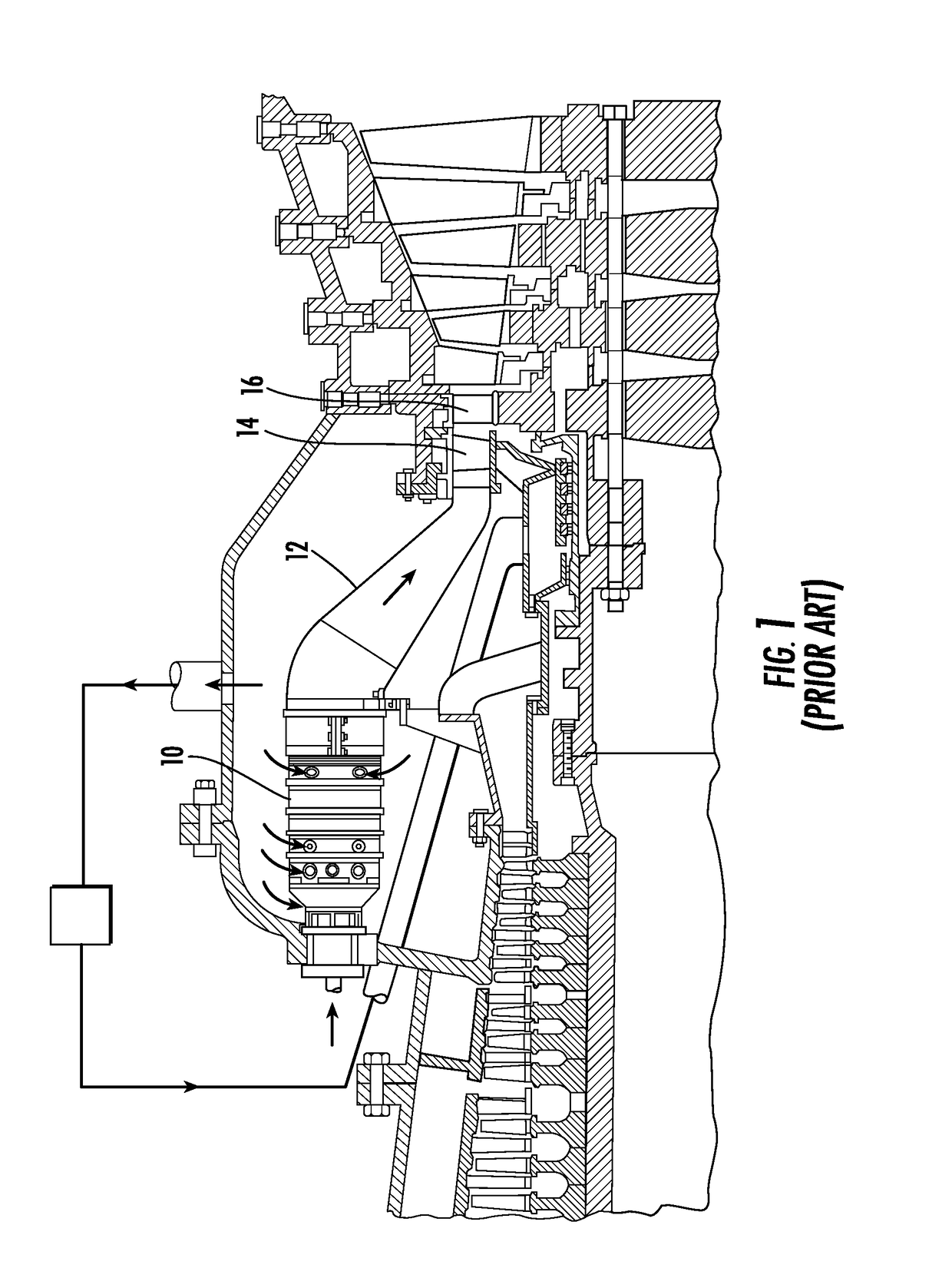Converging flow joint insert system at an intersection between adjacent transitions extending between a combustor and a turbine assembly in a gas turbine engine
a technology of converging flow and insert system, which is applied in the direction of machines/engines, stators, light and heating apparatus, etc., can solve the problems of reducing affecting so as to reduce stress formation and enhance the life of inserts
- Summary
- Abstract
- Description
- Claims
- Application Information
AI Technical Summary
Benefits of technology
Problems solved by technology
Method used
Image
Examples
Embodiment Construction
[0066]As shown in FIGS. 11-46, a transition duct system 100 for routing a gas flow from a combustor 102 to the first stage 104 of a turbine section 106 in a combustion turbine engine 108, wherein the transition duct system 100 includes one or more converging flow joint inserts 120 forming a trailing edge 122 at an intersection 124 between adjacent transition duct 126, 128 is disclosed. The transition duct system 100 may include a transition duct 126 having an internal passage 130 extending between an inlet 132 to an outlet 134 and may expel gases into the first stage turbine 104 with a tangential component. The converging flow joint insert 120 may be contained within a converging flow joint insert receiver 136 and disconnected from the transition duct bodies 126, 128 by which the converging flow joint insert 120 is positioned. Being disconnected on side surfaces eliminates stress formation within the converging flow joint insert 120, thereby enhancing the life of the insert 120. The...
PUM
 Login to View More
Login to View More Abstract
Description
Claims
Application Information
 Login to View More
Login to View More - R&D
- Intellectual Property
- Life Sciences
- Materials
- Tech Scout
- Unparalleled Data Quality
- Higher Quality Content
- 60% Fewer Hallucinations
Browse by: Latest US Patents, China's latest patents, Technical Efficacy Thesaurus, Application Domain, Technology Topic, Popular Technical Reports.
© 2025 PatSnap. All rights reserved.Legal|Privacy policy|Modern Slavery Act Transparency Statement|Sitemap|About US| Contact US: help@patsnap.com



